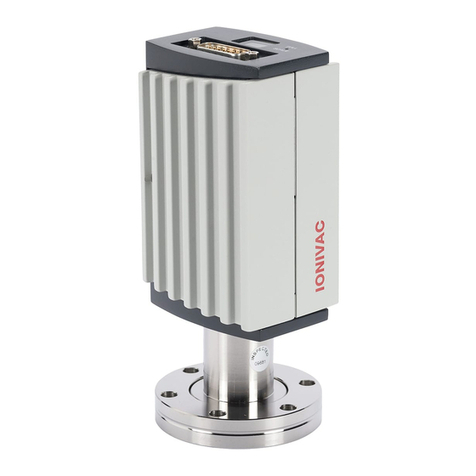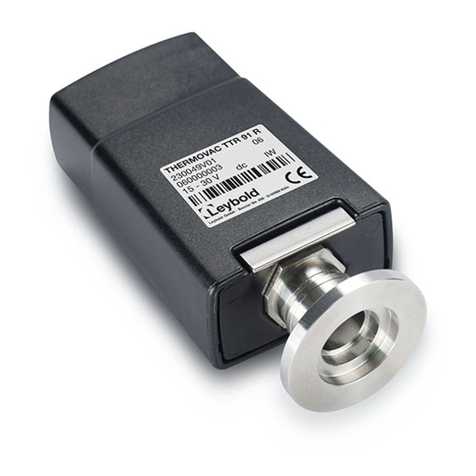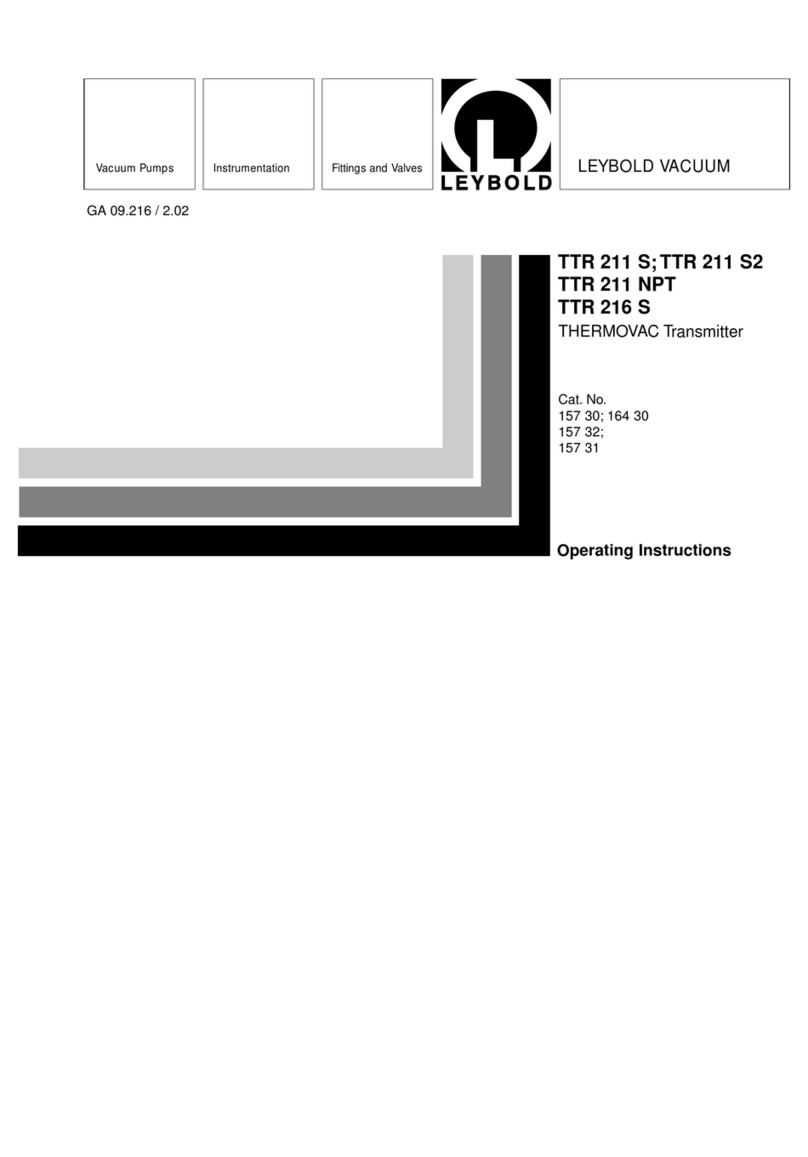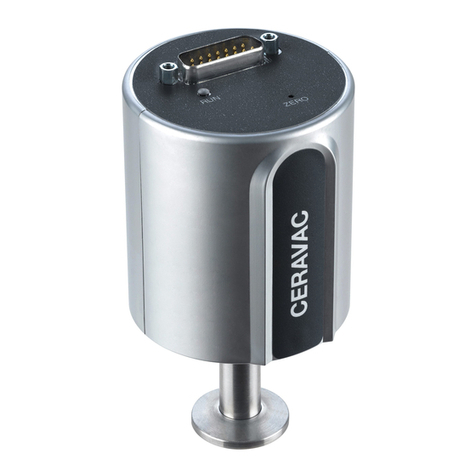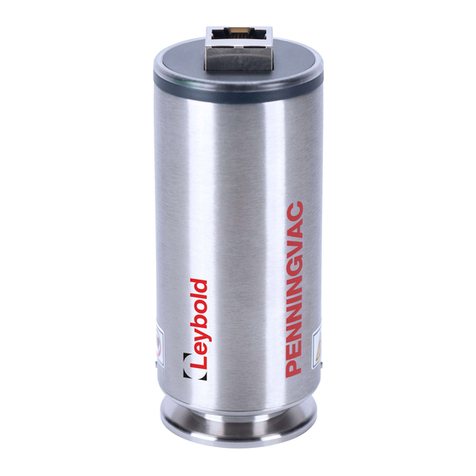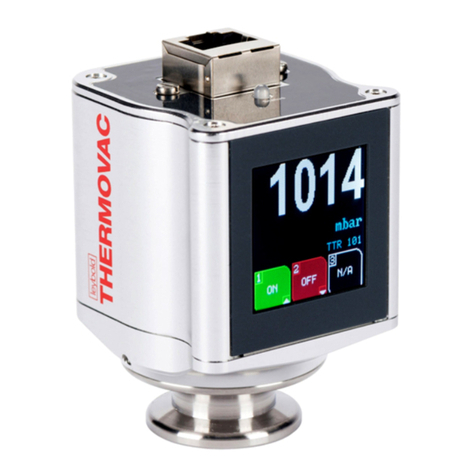
8 300544652_002_C1 - 11/2016 - © Leybold
Technical Data
Measurement principle: Thermal conductivity according to a MEMS Pirani sensor
Measurement range (N2and Air): 5×10-5 to 1000 mbar
Accuracy(1) (N2): 5×10-4 to 1x10-3 mbar: ±10% of reading
1×10-3 to 100 mbar: ± 5% of reading
100 to 1000 mbar: ± 25% of reading
Repeatability(1) (N2): 1×10-3 to 100 mbar: ± 2% of reading
Supply Voltage: 9 –30 VDC
Power consumption: < 1.2 Watt
Fuse (thermal recoverable): 200 mA
Analog output (100 Ω impedance): 0.61 –10 VDC, Log. 1.286 VDC/decade
Analog output resolution: 16 bit
Analog output update rate: 16 Hz
Sensor fail, analog output: 0.5 V
Materials exposed to vacuum (2):
P/N: 230035V02 to 230043V02: 304 stainless steel, sealing material FPM
P/N: 230045V02, 230047V02: 304 stainless steel, sealing material FPM, Parylene-HT®
Setpoint relay(s):
P/N: 230035V02 to 230038V02: 0
P/N: 230040V02 to 230047V02: 2
Setpoint relay range: 2×10-4 to 1000 mbar
Setpoint relay contact rating: 1A / 30 VDC/AC (resistive load)
Setpoint relay response time: < 100 ms
Setpoint relay contact resistance: 100 mΩ (max)
Setpoint relay contact endurance: 100,000 cycles (min) (30 VDC/1 A load)
Setpoint relay contact endurance: 2,000,000 cycles (min) (30 VDC/0.2 A load)
Internal volume:
P/N: 230035V02, 230040V02, 230045V02: KF16 2.80 cm3
P/N: 230036V02: CF 16 3.71 cm3
P/N: 230038V02, 230043V02: NPT 1/8” 3.04 cm3
P/N: 230037V02, 230047V02: CF 16 (bakeable) 23.14 cm3
Housing material: Stainless steel 304
Weight:
P/N: 230035V02, 230040V02, 230045V02: 168 g
P/N: 230036V02: 195 g
P/N: 230038V02, 230043V02: 183 g
P/N: 230037V02, 230047V02: 250 g
Maximum allowed pressure: 6 bar
Operating temperature: 0 to 40 °C (32 to 104 °F)
Bakeout temperature (Power off) (3): 85 °C (185 °F)
250 °C (482 °F) (only for P/N: 230037V02, 230047V02)(3)
Filament temperature: 35 °C above ambient temperature
Ingress Protection Rating: IP40
Leak rate < 5∙10-9 mbar∙l/s
(1) Accuracy and repeatability values are typical values measured in Nitrogen atmosphere at ambient temperature
after zero adjustment.
(2) For the full list of all materials exposed to process gases please contact Leybold.
(3) This bakeout temperature is only allowed at the end of the CF 16 flange. The temperature of the transmitter
must not exceed 85 °C (185 °F). Thus, it is not recommended to thermally insulate or directly heat the transmitter
and flange during bakeout.
